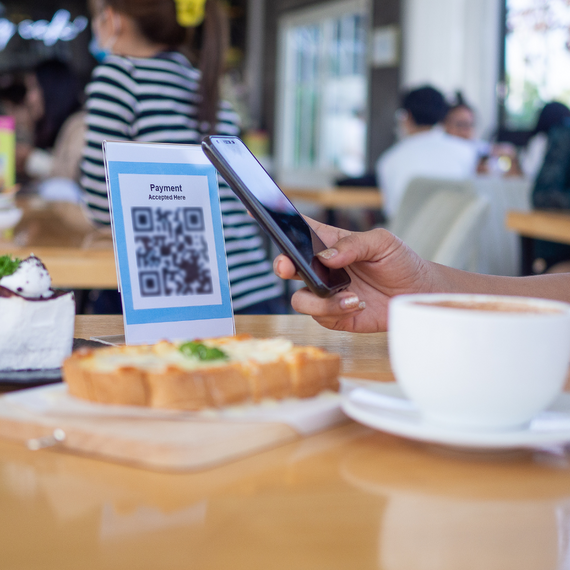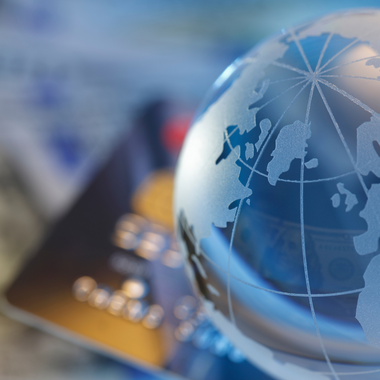
- 5 minutes read
What’s next for payments in 2018 and beyond?
The digital revolution has reshaped our expectations as consumers and radically changed the way we like to pay. But even now, the evolution of payments shows no signs of slowing down.
When Steve Jobs unveiled the original iPhone, heralding it as a “revolutionary and magical” device, he may not have realised how prophetic his words would turn out to be. The first wildly successful mass-market smartphone, it ushered in the era of mobile technology and put digital payments in millions of consumers’ pockets.
Fast forward ten years, and the digital revolution has reshaped our expectations as consumers and radically changed the way we like to pay. But, even now that the dust has settled and the smartphone is mainstream, the evolution of payments shows no signs of slowing down. If anything, it’s gaining even more momentum.
Seeing as a new year is just over the horizon, it’s the perfect time to reflect on the current state of the industry and discuss what lies ahead. So, without further ado, here’s a rundown of the key trends which we think will shape payments in 2018 and beyond.
We’ll go cashless, but not cash-free
When was the last time you paid for something in cash?
If you can’t remember, you’re in good company. Four in five people carry less notes and coins than they did a year ago, especially those in the 18 to 34 age bracket (feel any younger?). And they expect to carry even less in two years’ time.
This trend is affecting every aspect of our lives. Case in point, the popularity of contactless on the London Underground has spurred Visa to launch a program that helps cities make their public transport systems cashless. Similarly, a majority of North Americans report that they’d be more likely to use public parks and register for municipally-run activities if they could pay using a preferred digital method.
Even non-profits and religious organisations aren’t immune to this shift. Since people have less spare change, donations are declining. So, churches and charities like Oxfam and the Royal British Legion, which runs the Poppy appeal, are forgoing traditional collection boxes in favour of contactless donations.
But cashless doesn’t mean cash-free.
Cash remains a lifeline for low-income families and the underserved. According to the Taylor Report, an independent study on work practices commissioned by the UK government, up to £6 billion worth of wages a year are paid in cash. Expats may also have no other option but to pay in cash, as account opening procedures can be burdensome and bureaucratic, even in first world countries like the US and the UK.
More importantly, cash is quick and private, which appeals to those who have an issue with Big Brother. So, far from dying out, cash will also evolve, merging with new technologies to gain digital relevance.
paysafecard has long been blazing this trail, allowing customers to convert cash into a format they can use to shop online or top up their digital wallet. A pilot project in South Korea follows a similar concept: shoppers at participating stores can exchange their loose change for a pre-paid card.
In Sweden, where less than 1% of transactions involve paper money, the central bank is considering e-Krona — the first government-backed digital currency. The aim is to ensure continued technological evolution doesn’t leave vulnerable sections of society excluded. As physical cash continues to disappear from our pockets, other countries may also launch similar initiatives.
A coming of age for cryptocurrencies?
Speaking of digital cash, cryptocurrencies, long touted as the next big thing, are becoming more widely available.
You can already pay with Bitcoin in some surprisingly mundane places, including Expedia, Etsy and at least one Subway sandwich shop in the US. In addition, UK-based “challenger” bank Revolut recently announced plans to allow its 1 million customers to exchange, store and pay with Bitcoin via its app and card.
Cryptocurrencies have enormous potential as alternatives to cash. They’re created digitally, so they don’t need to be converted. They can’t be counterfeited. And, because they’re not tied to a single country’s exchange rate, interest rates and other charges, they’re faster, simpler and cheaper to use in an international setting.
Many consumers expect cryptocurrencies to be more widely accepted in the next two years. However, our research suggests that the process won’t be entirely smooth sailing.
A majority of respondents think cryptocurrencies are still too risky and unknown. High volatility probably won’t help boost confidence in the short term.
We’ll get closer to a global faster payments standard
Faster payments have been on the industry’s agenda for several years. Yet, despite big ambitions and a general consensus that there already is the technology to make it happen, a global standard has remained stubbornly out of reach.
But, 2018 may well be the year that finally sees it within touching distance.
The European Central Bank is expected to roll out its new system — called TARGET Instant Payments — in November 2018. Aside from reducing settlement time from the current one-day standard to mere seconds without needing a clearing house, the rollout will allow consumers to make real-time transfers across the Eurozone’s 19 countries.
Similarly, the US Federal Reserve’s Faster Payments Task Force recently released its much awaited second white paper. A bold statement of intent, it sets out a detailed roadmap that hopes to achieve a “faster, ubiquitous, broadly inclusive, safe, highly secure and efficient” nationwide payments system by 2020.
Biometrics will continue to take centre stage
We’re already accustomed to using fingerprints or, in the case of high-end Android smartphones, iris scans to authorise mobile payments. In the coming years, we’ll build on these technologies to make biometrics more sophisticated and secure.
Already, there’s a shift towards biometric data we hadn’t considered before. A KFC outlet in China recently made waves for trialling 3D technology that allows you to pay by smiling at a camera. Brazilian bank Banco Bradesco has deployed ATMs that read the unique vein pattern in your palm. And there’s also been a study into authentication via sweat molecules, which are unique to individuals.
It’s thought that 77% of point of sale terminals around the world will be NFC-enabled, and therefore able to accept mobile payments, by 2020. However, the future of biometric payments isn’t necessarily tied to NFC-enabled equipment, or to mobile wallets.
KFC’s smile-to-pay technology is a prime example. It doesn’t require a smartphone or other device, because the user registers beforehand. Similarly, a London Costcutter store is trialling payment via a fingerprint scanner that links directly to your bank account. While it’s still early days, these developments could be the tipping point that leads to a new era of cardless payments.
The flipside is that biometric data isn’t as easily replaced as a lost or stolen card. And while the concept of someone stealing your retina scans may sound far-fetched, cybercriminals have proved nothing if not adaptable and resilient: a Vietnamese security firm claimed they managed to break the iPhone X’s face ID technology a mere week after its release.
The manner in which biometrics are stored and kept safe also feeds into a broader discussion on big data.
The changing role of payments data
The payments industry will have to rethink its approach to big data in 2018, especially in the EU.
As much as it can speed up onboarding and authentication, help providers deliver a more personal service and assist in fighting fraud, big data has also opened an ethical Pandora’s Box. Indeed, the European Banking Authority recently launched a discussion paper in which it expressed concern on current practices such as creditworthiness assessments, as they can lead to discrimination and financial exclusion.
Upcoming changes to the regulatory landscape such as the second Payment Services Directive and the General Data Protection Regulation (GDPR) will also affect the way merchants and payment providers process and store customer data.
In particular, people will now need to actively consent to data sharing. They’ll have a right to request all data an organisation has on them. And, they’ll have a right to be forgotten, that is to ask an organisation to delete all the personal data it holds on them.
In summary
2018 will continue to mark an exciting time in the payments industry. Lack of friction, speed and convenience will keep driving innovation. And, some of the technological developments on the horizon might prove to be game-changers.
At the same time, the industry will also have to adapt to regulatory change and address negative public perception around its treatment of personal data.
It’s only natural for consumers to feel reluctant about sharing their information in the face of high profile breaches such as the recent Equifax debacle. The onus is on the industry to include consumers in the conversation, build a relationship of trust and empower them to share data in an informed way instead of opting out of new technologies.




